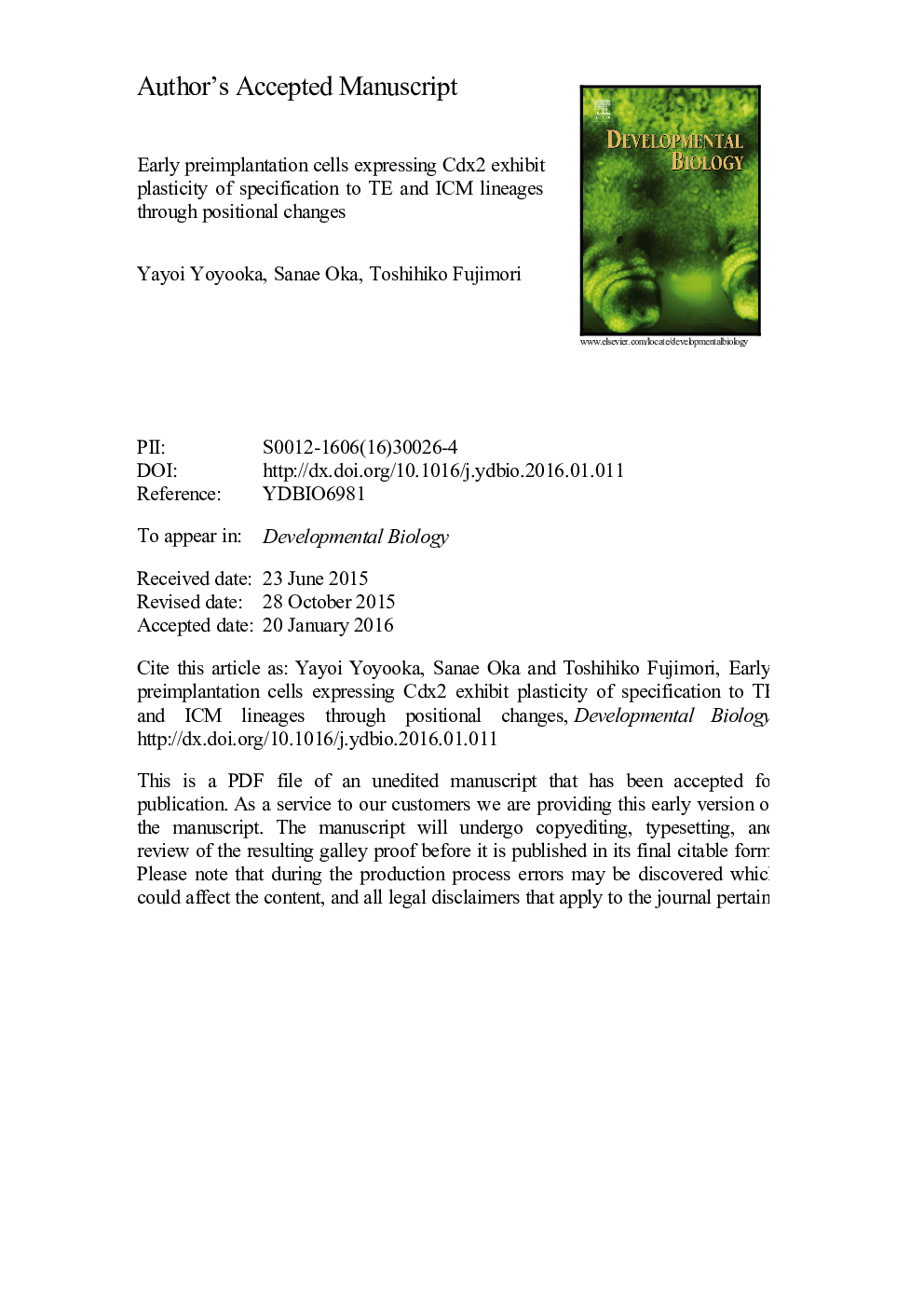| Article ID | Journal | Published Year | Pages | File Type |
|---|---|---|---|---|
| 10931225 | Developmental Biology | 2016 | 38 Pages |
Abstract
The establishment of the trophectoderm (TE) and the inner cell mass (ICM) is the first cell lineage segregation to occur in mouse preimplantation development. These two cell lineages arise in a position-dependent manner at the blastocyst stage: the outer cells form TE, which will generate the future placenta, while the inner cells give rise to the ICM, from which the epiblast (EPI) and primitive endoderm (PrE) arise. Previous studies have shown that a portion of cells relocate from the outside position to the inside during this preimplantation stage, but few studies have investigated the correlation between cell relocation and the expression of key transcription factors critical for cell differentiation. To monitor cell movement and the status of the TE-specification pathway in living embryos, we established Cdx2-GFP reporter mice allowing us to visualize the expression of Caudal-type transcriptional factor (Cdx2), a key regulator of the initiation of TE differentiation. Observation of Cdx2-GFP preimplantation embryos by live cell imaging revealed that all cells localized in an initial outer position initiated the expression of Cdx2. Subsequently, cells that changed their position from an outer to an inner position downregulated Cdx2 expression and contributed to the ICM. Finally we showed that internalized cells likely contribute to both the EPI and PrE. Our datas indicate that cells expressing even high levels of Cdx2 can internalize, deactivate an activated TE-specification molecular pathway and integrate into the pluripotent cell population.
Related Topics
Life Sciences
Biochemistry, Genetics and Molecular Biology
Cell Biology
Authors
Yayoi Toyooka, Sanae Oka, Toshihiko Fujimori,
